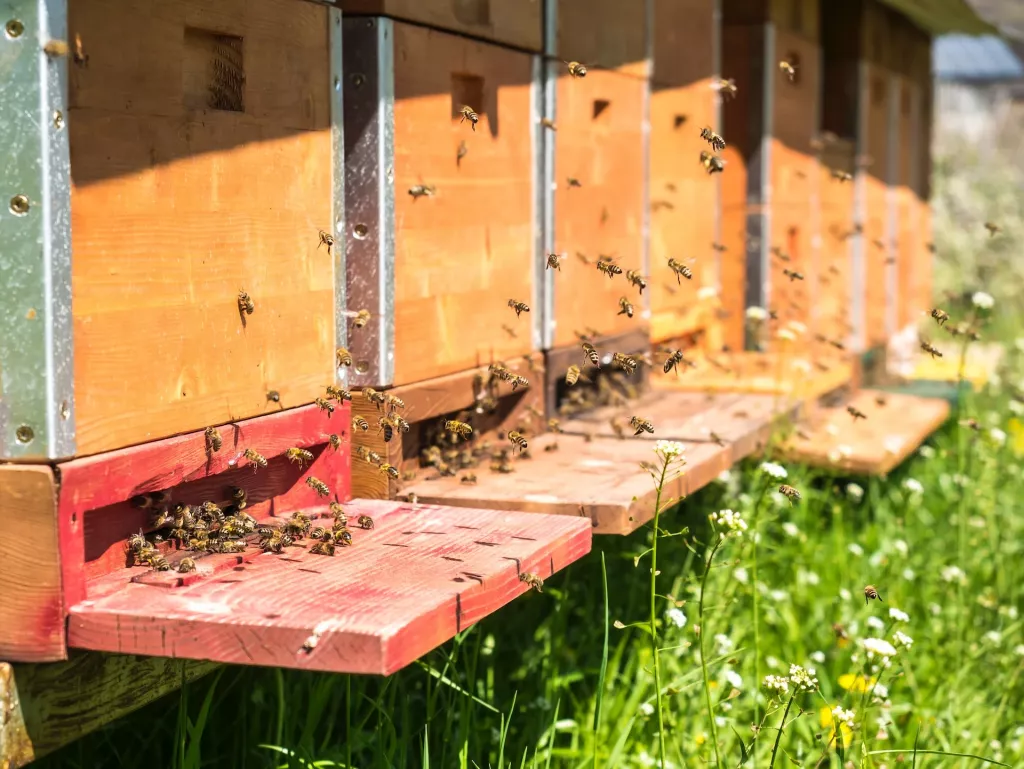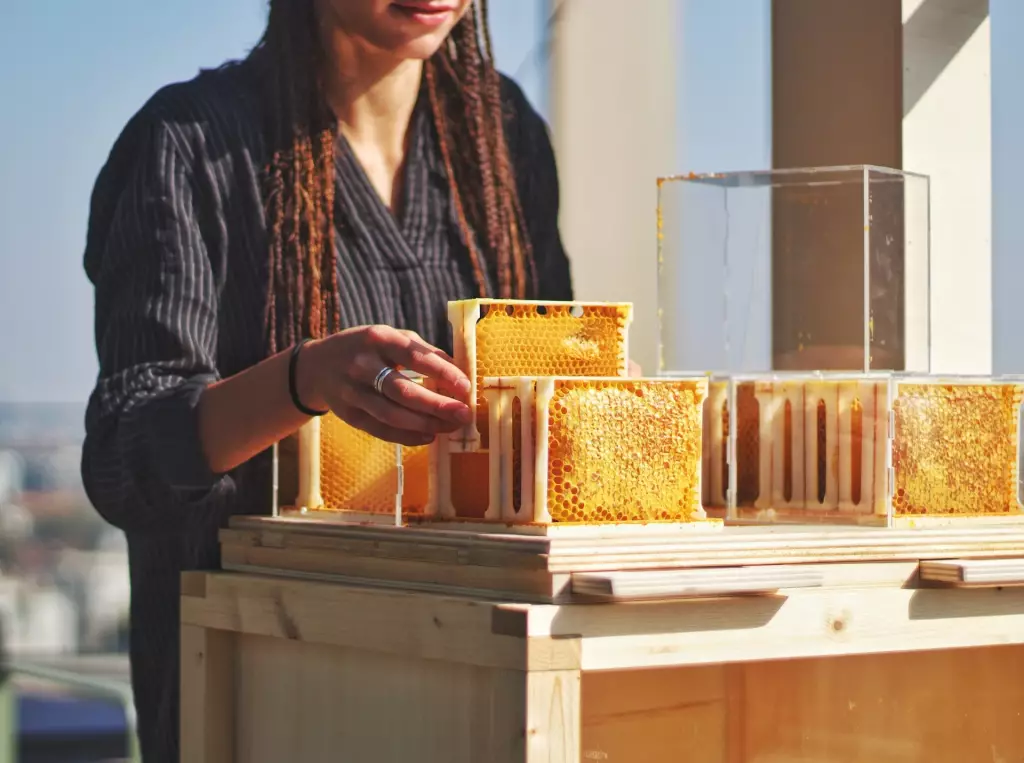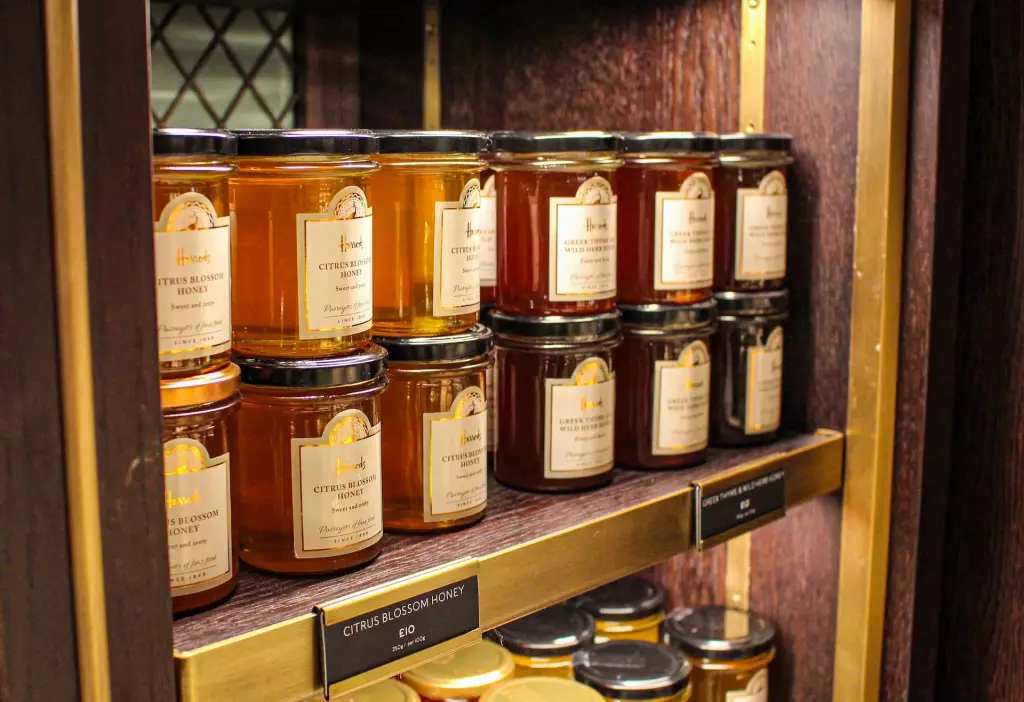How Many Beehives Do You Need to Make a Profit?
Your beekeeping has paid off and you have leftover honey you can sell. Now you’re curious: can you do this full-time? Here’s how you can earn from beekeeping.
The average salary needed to live comfortably in 25 of the largest metro areas in the United States is $57,013, after deducting all applicable taxes. With this target amount in mind, it would take at least 500 beehives that have made it past their first year to live comfortably as a full-time beekeeper.
Beekeepers need to take a diversified approach to apiculture if they want to maximize their profits. This can be exciting because there are multiple products and services involved in beekeeping. Read on to find out more about how you can make the most out of each hive!
Summary
- You'll need hundreds of established beehives to make a full-time income.
- Besides honey and beeswax, you can sell alternative products such as bees (ie. packages, entire colonies, or queens).
- For regular bee products, there are multiple ways to maximize profits. For example, infused or specialty honey is more valuable than raw honey.

On this page:
How You Can Profit From Beehives
Bee Products
Honey is the most straightforward product you can harvest from beehives, but don’t limit yourself. As you gain more experience, you can look into other ways of profiting from your beekeeping efforts.
Here’s a quick look at bee products and their average price per unit:
| Bee Products | Average Amount Produced per Hive, per Year | Average Price per Unit |
|---|---|---|
| Honey | 25 to 50 pounds surplus | Up to $10 per pound |
| Royal Jelly | 17 ounces | $6 to $8 per ounce |
| Pollen | 66 pounds | $3 to $5 per ounce |
| Propolis | 5 to 7 ounces | $6 to $8 per ounce |
| Beeswax | 1 to 2 pounds per 100 pounds of honey harvested | $10 per pound |
Bees
Aside from bee products, honeybees themselves are a good source of income. Even if beekeeping started out as a side hobby, you eventually reach a point where you have plenty of extra bees. In this circumstance, you can split your colony and cultivate smaller ones (nuclear colonies) or steadily take a small number of bees from different colonies and then use it to build another colony (packages)
The amount you can earn per sale does not just depend on how you structure your sale, but also on factors like their breed, size of the colony, overwintering, and your location.
Packages
Packaged bees can be sold at $140 to $185 for three pounds. This is a common practice by large commercial beekeeping operations. Small-scale beekeepers rarely sell packaged bees, but if you are willing to start a business in bee packaging then it’s best to prepare: packaged bees are usually agitated because they’ve been taken away from their colony and thrown into a different mix of bees.
Nuclear Colonies
Nuclear colonies, or nucs, are a small team of bees from the same colony. They have a selling price of $175 to $220. You will need to purchase queens or raise your own for the nucs.
Nucs are more expensive because creating them takes more time and effort. You will need to wait until after they have produced their first comb. The colony will be full of bees who are just getting started, but they’ve already bonded over all their shared tasks. As a result, they work cohesively and know how to do operate like a full-scale colony.
Queen Bees
Selling queen bees is for experienced beekeepers because it takes a wealth of finesse and skill. As a beekeeper, expect to be armed with special equipment and heavily involved throughout the process. You can expect to get $35 to $45 per queen.
Full-Sized Colonies
While selling full-sized bee colonies is possible, it is not a common method of consistent income. This is a heavily regulated activity in many countries and regions because it carries the risk of spreading diseases and pests.

Tips to Maximize Your Profits per Product
Honey
Selling honey is the most common and most straightforward method of profiting from beekeeping. The price of your product will depend on where you are based and the type of honey.
Aside from raw honey, you could also look into infused honey, which can significantly increase its selling price. Raw honey made from different flowers in your local area is also considered a delicacy, especially if it’s a specie that is not available in all regions.
Flavored honey sticks are also incredibly popular and you won’t need to worry too much about the packaging. You could also try processing raw honey into honey butter or creamed honey.
Royal Jelly
Most beekeepers who sell royal jelly are already advanced or very experienced in the craft. This is because it is only possible to harvest royal jelly when you have several strong colonies that are capable of raising queens.
Royal jelly is used in plenty of skincare and beauty products. As a result, you can boost the perceived quality and selling price of your product if you invest a little extra in fancy packaging.
In addition, royal jelly can sell for almost double the price if given in freeze-dried powder form because it is used in a wide variety of health supplements, cooking, and baking recipes.
Pollen
Pollen can be harvested with a special pollen trap. This is attached over the entrance and strips forager bees of pollen as they crawl through the opening. If you plan on collecting pollen, you need to harvest it from the trap on a daily basis. It will begin to mold if you don’t.
Note that it is possible to collect too much bee pollen from your colonies, which could become a cause of nutritional stress. It’s a crucial source of protein used in feeding and raising their young, and it’s only available at certain times of the year.
Propolis
Plenty of small-scale beekeepers find that collecting propolis is very profitable. Propolis can be harvested by scraping the hive during inspections or by using propolis traps. The latter is strongly recommended because hive scrapings contain tons of foreign material like wood, honey, wax, grass, and bee parts.
Once the trap is full of propolis, freeze it for 24 to 48 hours before harvesting. It’s sticky and gooey at warm temperatures, so it would be difficult to handle it right after removing the trap.
Prepare to scrape or smack the trap to collect the product, but be realistic about the amount you can get—you can only harvest about 70 or 80 percent of the total propolis produced because a portion will always stick to the trap.
Here’s a quick look at all the different ways you could sell propolis:
- Chunks
- Extracts
- Powder
- Capsules
- Creams
- Soaps
- Drops
- Toothpaste
- Chewable Strips
Beeswax
If you plan on selling beeswax, you’ll need to invest in wax rendering equipment.
Other beekeepers go one step further and make different products from their beeswax, like candles and lip products. If you plan on branching out in this manner, consider extending your network as well; there may be times when your hives do not produce the amount of beeswax needed to keep up with your demand.
The price of beeswax is based on the following factors:
- Whether the wax is in large blocks or pellet form
- Whether it is certified organic
- Grade or purity
- Color
- Region of production
Raw Honeycomb
Most beekeepers forego selling honeycomb because it means giving up an important part of honey production. Bees put a lot of work into producing the wax and the comb. They need anytime between seven days to two months.
Aside from the opportunity cost in harvesting honeycomb, high quality honeycomb is only produced during a heavy honey flow. This is also the only time you can harvest a good amount of honeycomb from your strongest colonies. You can get $1 to $2 per ounce.
Remember to handle each honeycomb with care. They are fragile and if they break, consumers will not purchase broken honeycomb. Presentation is key.

Labeling Your Products
Regardless of how you choose to profit from your beehive, one thing holds common for all products: make sure you label them correctly, list down the ingredients, explain how it’s processed, and get accreditation. Today’s consumers are becoming increasingly concerned of where their food is from and how it’s been sourced. Transparency will play a pivotal role in your success as a seller.
Consult this guide on the proper labeling of honey and honey products by the Food and Drug Administration for further information.
Getting Started
The estimated cost of acquiring a beehive and getting it through the first year is $760. Moving forward, maintenance costs and emergency costs will also affect your profit. Here’s a handy guide on how much you can expect to spend on the initial cost of setting up an apiary.